Bleeding Control in the Workplace
- Jun 9, 2020

Bleeding Control in the Workplace
Bleeding control kits are critical in schools and public venues, but bleeding control kits in the workplace are important, too.
On-the-job traumatic injuries are incredibly common. Accidents happen! They can be caused by motor vehicle crashes or construction, assembly line, large equipment, or other industrial or agricultural accidents.
According to the Journal of Workplace Health and Safety, “Uncontrolled blood loss is a primary source of preventable death after injury. Workplace injuries and fatalities are common, with most occurring in the agricultural/fishing/forestry/hunting or transportation/warehousing industries.”
The risk of traumatic injury is especially high for young workers. The CDC reports that traumatic injuries are often the result of hazards present in the workplace such as sharp knives in restaurant kitchens or slippery floors in recently cleaned restrooms. Limited work experience and lack of mandated safety training are also factors. Workers of middle and high school age are especially vulnerable to workplace injuries.
Finally, the most recent traumatic injury data from the Bureau of Labor Statistics (BLS) shows 5,280 fatal injuries in 2018. With 453 homicides in the workplace in 2018, violence presents another potential bleeding risk.
How Many Stop the Bleed Kits Does Your Workplace Need?
That’s a hard question to answer and unfortunately, there are no state or federal guidelines to mandate the number of bleeding control kits employers or organizations should have available. Some states, like Texas, are starting to implement bleeding control legislation and we hope that these laws will soon offer official guidance about how many bleeding control kits your workplace needs.
However, it’s far better to have something than nothing at all! You’ll want to consider what’s appropriate for a given situation. It’s important to think about why you’re purchasing bleeding control kits, what you hope to accomplish with them, and how many people may need them. Ideally, you should have at least one kit for every 10 employees.
We encourage people to think of these kits as a type of insurance — we hope we never need to use it, but we’re glad we have it if we need it!
Best Practices and Recommendations for Workplace Bleeding Control
- Clearly communicate emergency protocols and procedures.
- Install clearly-marked wall-mounted trauma kits next to publically accessible AED cabinets and first aid kits.
- Equip company-owned vehicles with a first aid and a bleeding control kit.
- Multiple and readily accessible bleeding control kits are essential for corporate environments, industrial environments, farms, warehouses, factories, commercial kitchens, and construction worksites.
- Although anyone can use a bleeding control kit, it’s important to offer your employees company-sponsored first aid and Stop the Bleed® training sessions.
- Require building security team members to carry bleeding control kits and receive Stop the Bleed®, CPR, AED, and first aid training.
- Mandate industry-specific safety training at regular intervals.
For more information about the importance of bleeding control kits in the workplace or to receive a free consultation, give us a call at 800-544-0004, visit our website, or download our free Bleeding Control Resource Guide.





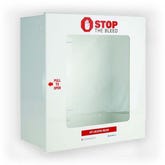
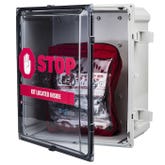
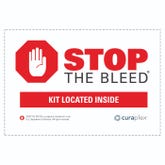
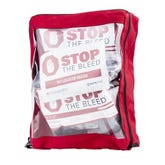
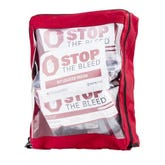
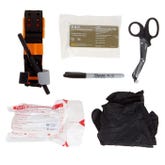
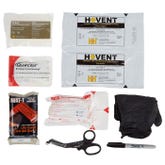
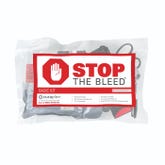
 CALL US:
CALL US: